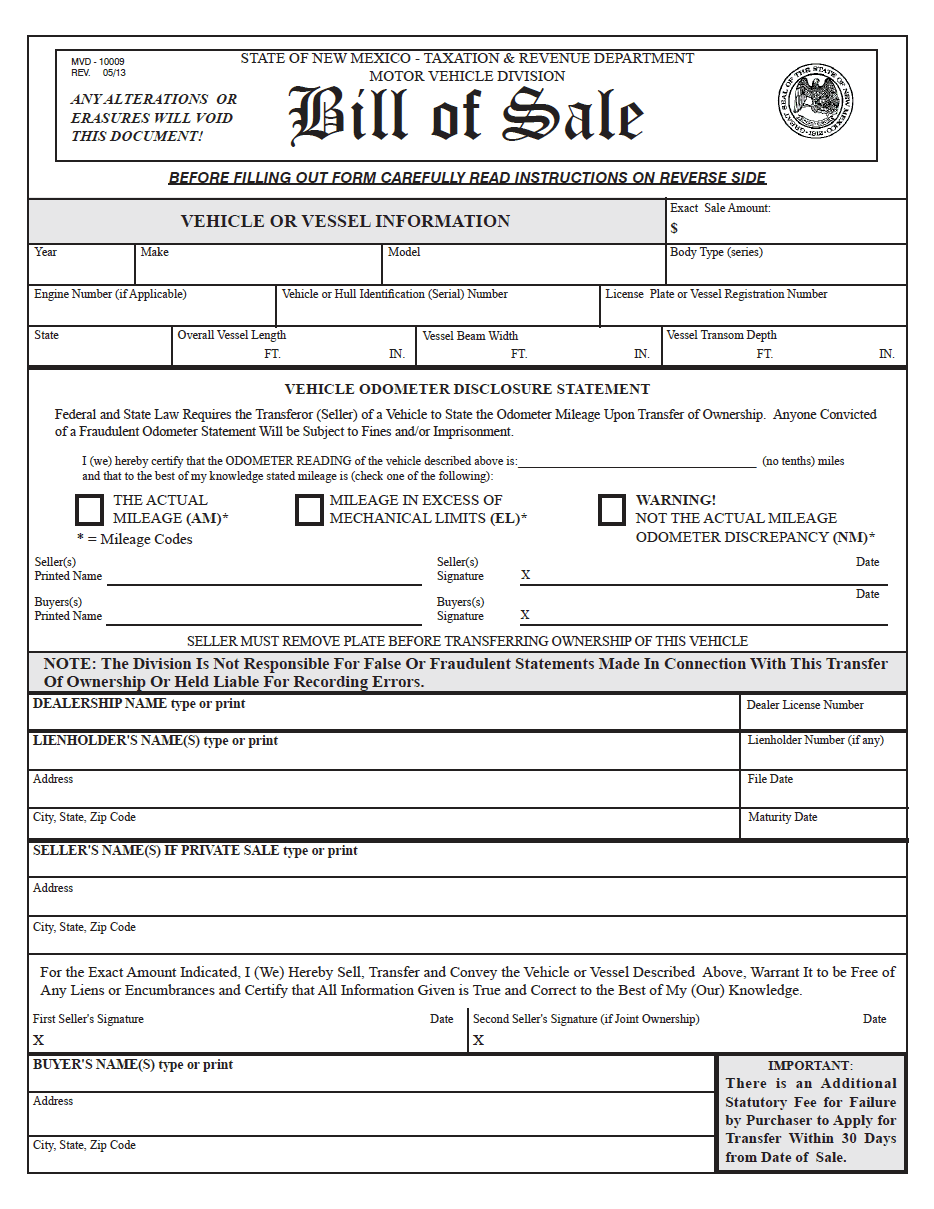New Mexico Motor Vehicle Bill of Sale Form
A New Mexico motor vehicle bill of sale form provides a written agreement of the details of an automobile transaction. The document includes relevant information to ensure a secure and legitimate sale, including the make, model, year, VIN, and odometer reading of the vehicle, and the party’s names, addresses, and signatures.
It binds the agreement between both parties, making it essential when transferring ownership. The state requires the bill of sale when the vehicle has an incomplete title or does not have one.
|
How to Register a Car in New Mexico (4 Steps)
Motor vehicle registration and titling must occur within thirty (30) days of the sale. New Mexico extends the deadline to ninety (90) days for cars purchased out-of-state.
MVD offices handle registration and titling matters. First-time registration must occur in person at the owner’s nearest location.
Step 1 – Insurance
Local law requires that vehicles operating on New Mexico roadways have a current insurance policy that aligns with the state’s requirements. Upon registration, the owner must present proof of the plan through an insurance card, policy copy, or company letter.
Step 2 – Emissions Testing
Bernalillo County residents and commuters must undergo regular emissions testing. Cars that qualify include those with the model year 1987 or newer and weigh up to 10,000 pounds gross vehicle weight (GVW).
Step 3 – Title & Registration
The owner must bring the following documents to their title and registration appointment:
- Odometer Mileage Statement. The registrar can prove the odometer reading by providing the MCO or submitting a completed odometer disclosure statement (MVD Form 10187) or application (MVD Form 10002).
- Proof of Insurance.
- Payment.
